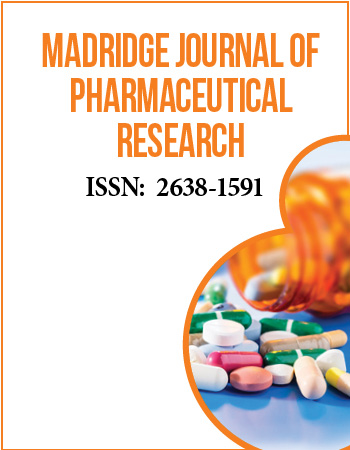International Conference on Medicinal and Pharmaceutical Chemistry
December 5-7, 2016 | Dubai, UAE
Structure based drug design, synthesis and screening of adenosine A2A antagonists as novel antiepileptic drugs
Department of Pharmacy, Birla Institute of Technology and Science-Pilani, India
Purpose: Adenosine receptors (AR) play an important role in chemical signaling in both, peripheral and central nervous systems. Four subtypes of Adenosine Receptors have been identified: designated A1, A2A, A2B, and A3. A2A ARs are found in high density in certain brain regions, such as Striatum, Nucleus accumbens, and Olfactory tubercle. Adenosine exhibits high affinity to A2A ARs, which appear to be tonically activated under physiological conditions. A2A AR antagonists have been proposed as novel therapeutics for Epilepsy and Parkinsonʼs disease.
Methods: Human A2A AR bound to ZM241385 with IC50 0.22nM (PDB ID: 3EML) crystal coordinates were downloaded from protein data bank. Energy-optimized pharmacophore was prepared using Schrodinger software. The resulting pharmacophore model contains one hydrogen bond Acceptor (A), one hydrogen bond Donor (D) and three Ring systems (R). Using these features, screened against the public library of compounds (Asinex) to find potential lead compounds.
Results: The compounds which yielded fitness score of more than 1.0 the pharmacophore model were further subjected to Glide HTVS, SP and XP. Glide docking results revealed 33 hits were identified as potential lead molecules. Among them 9 Asinex molecules were selected based on the highest docking score and more number of hydrogen bonds with Glu169, Asn253 amino acids and Compounds were evaluated in the PTZ induced seizure model in adult zebrafish (standard 8 min. protocol). Furthermore most potent compounds were evaluated for Dose response analysis and major toxicities in Zebrafish model.
Conclusions: This study demonstrates that a pharmacophore search using a model based on A2A AR inhibition, and the enzymeʼs structural features can be used to screen for new candidates for antiepileptic therapy. Most potent compound to show Anti-epileptic activity was selected and derivatives are synthesized to develop SAR. These have to be validated by using In vitro inhibitory activity.


